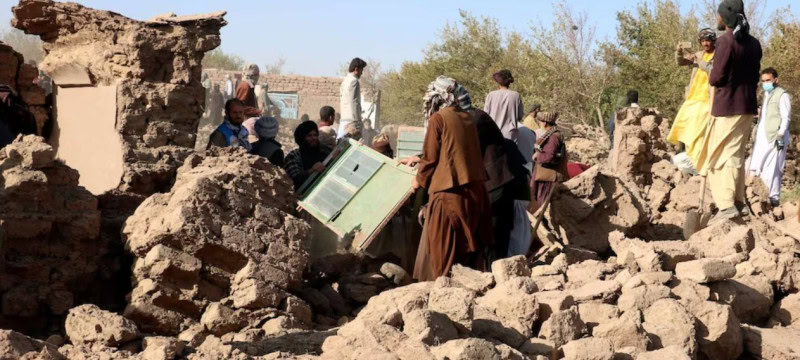A new earthquake has shaken western Afghanistan, adding further distress to a region already reeling from a devastating series of recent tremors. The quake, measuring a magnitude of 6.3, occurred at a shallow depth around 5:10 am local time (12:40 am GMT), with its epicenter located approximately 29 kilometers north of Herat city, according to the United States Geological Survey.
In the wake of the earlier series of earthquakes, which left entire villages in ruins and impacted over 12,000 individuals, volunteers and rescue teams have been engaged in last-ditch efforts to locate survivors. UN estimates indicate a grim toll on the affected population, but local and national authorities have provided conflicting figures regarding the number of casualties. The disaster management ministry has reported a tragic count of 2,053 fatalities.
Read more:Is Earthquake Predictable?
Notable quake, preliminary info: M 6.3 – 28 km NNW of Herāt, Afghanistan https://t.co/uIPpxcmo6K
— USGS Earthquakes (@USGS_Quakes) October 11, 2023
A spokesperson for the disaster management ministry, Mullah Janan Sayeq, acknowledged the fluidity of the situation, saying, “We can’t give exact numbers for the dead and wounded as it is in flux.”
Thankfully, there were no immediate reports of new casualties following Wednesday’s earthquake, but the damage assessment is ongoing. Herat city, home to over half a million people, was in the vicinity of the quake’s epicenter.
The governor’s office of Herat stated that districts neighboring areas devastated by the earlier quakes had experienced substantial losses. They mentioned the mobilization of medical teams and officials working together to transfer injured individuals to hospitals.
The earlier series of earthquakes had completely razed at least 11 villages in Herat province’s Zenda Jan district, as reported by the UN. The aftermath of this catastrophe has left countless individuals displaced and grieving. Mohammad Naeem, who lost 12 relatives, including his mother, in the weekend’s earthquakes, emphasized the impossibility of remaining in an area where their family members had perished. Many Herat residents have been residing in tents in open areas due to the fear of aftershocks, as reported by local media.
Providing shelter on a large scale is an imminent challenge for the Taliban authorities in Afghanistan, who assumed power in August 2021 and have strained relations with international aid organizations. The recent earthquake compounds an already dire situation, as Afghanistan faces a severe humanitarian crisis, exacerbated by the withdrawal of foreign aid following the Taliban’s resurgence.
Herat province, located on the border with Iran, is home to approximately 1.9 million people, and its rural communities have been grappling with a prolonged drought. The earthquake further underscores the vulnerability of communities in Afghanistan, where many homes are constructed from mud and wood, lacking the structural reinforcement needed to withstand seismic events. Extended families often reside together, making them particularly susceptible to the devastation brought by significant earthquakes. This recent series of earthquakes stands as the most severe to strike the war-torn country in over a quarter of a century, compounding the challenges faced by Afghanistan’s already beleaguered population.









